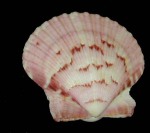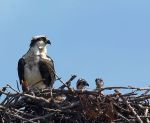Some form of this question is probably the question I get the most often on BCS. It is usually a bit more blunt, “Why do you do your Beach Chair Scientist?” or “What made you come up with the idea?” It is simple. I was sitting in a web design class at the Bethesda Writer’s Center and the term Beach Chair Scientist popped into my brain.
It was the summer and I had just returned from a trip home where I went to the beach and some of my family from Philly (Go, Phils!) continually tried to stump me with interesting beach questions. They know I have a B.S. degree (insert joke) in marine sciences so I really was the best person to ask. But, what I discovered was that I love to make the answers entertaining and somehow less intimidating (This type of environmental education somehow coined ‘edu-tainment’). I thought if I started the blog they would be able to shoot me the questions all year round, even when I am not at the beach with them. I used to teach outdoors to people about the environment for a salary (and housing). Now, I just teach people about fisheries data from an office. The blog was my outlet.
I do want to pay homage to all those who do work tirelessly teaching people about the environment.  It is often a thankless, over-worked and under-paid bunch of people. People with more enthusiasm than one could ever imagine. Environmental education has many various facets and is often difficult to define. But, the one constant of anyone in the field is heart and dedication. I love you all!
It is often a thankless, over-worked and under-paid bunch of people. People with more enthusiasm than one could ever imagine. Environmental education has many various facets and is often difficult to define. But, the one constant of anyone in the field is heart and dedication. I love you all!
I decided to ask a few of these wonderful environmental educators the same question people ask me “What inspired you to become an environmental educator?” Here are their answers. Thanks to everyone that contributed.
- “I always wanted to make a difference. Environmental education allows me to make a difference by combining my love of nature and my ability to communicate with people.” Kate Anderson, ___ @ ___ in somwhere, MA.
- “EE is a way for me to share one of my passions (the environment) with people and make a positive difference towards the future at the same time.” Beth Jones Cranford, Summer Camp Coordinator @ Morehead Planetarium and Science Center in Chapel Hill, NC
- “I have always loved nature and sharing it with others.” Travis Davis, Education Director @ Wetlands Institute in Stone Harbor, N.J.
- “I LOVE sharing my passion for science with others!” Laura Diederick, Marine Education Specialist @ Smithsonian Marine Station, Fort Pierce, FL
- “I wanted to help conserve all of Mother Nature’s bounty and you cannot obtain conservation without education and vice versa.” Kristi Martin Moyer, Facilities and Land Manager @ Pine Jog Environmental Education Center in West Palm Beach, FL
- “Ranger program at Rocky Mountain National Park in 4th Grade.” Katie Navin, Program Coordinator with the Colorado Alliance for Environmental Education in Golden, CO
- “I want to humans to have less of an impact on the Earth!” Leslie Sprague, Director of Education @ the San Antonio Children’s Museum in San Antonio, TX
- “I think my inspiration came from my love of teaching and working with kids which I discovered in college combined with my love of being outdoors as a kid. The two came together when I “found” EE at Pine Jog. Oh, and hope I have made a difference (if only a small one!).” Susan Toth, Education Director @ Pine Jog Environmental Education Center in West Palm Beach, FL
To me it seems that one answer is clear: What inspires us to keep doing what we are doing is because we love it.
Image (c) agreenerindiana.com


















What people are saying …